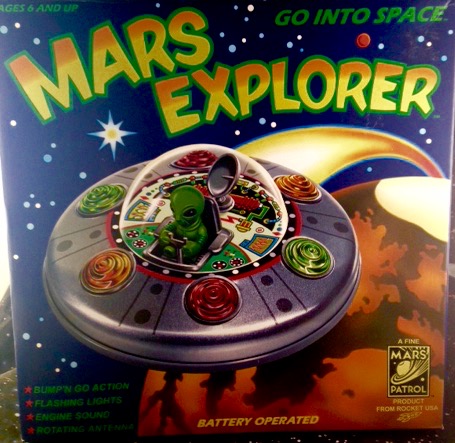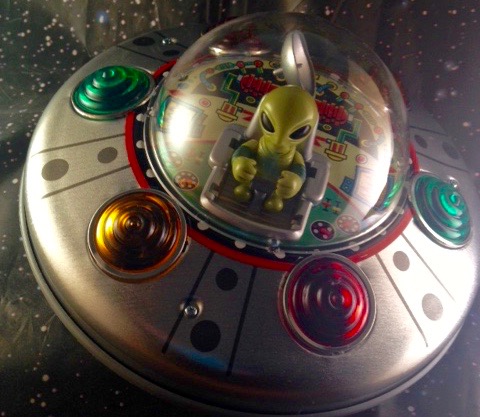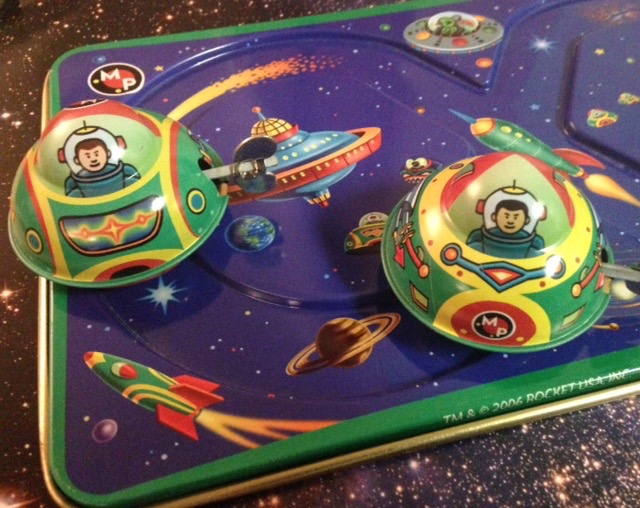|
|
|
Above:
Robot
artist
George Eisner created new ‘50’s-themed box art for
the “Gang of Five” wind-up robots, available through
Rocket USA. Shown are three members of the gang. L
to R: Sonic (Train) robot, Non-stop (Lavender)
robot, and Target robot. At around $20, these
brightly-lithographed wind ups were a robot bargain.
|
|
L
to R: Machine Man witth the Masudaya Box. The
original Machine Man, a large, skirted, batttery
operated, bump'n'go robot from the 1950s is one of
the rarest robots in the world. In 1997 an
original Machine Man went for a whopping $74,000
at an auction at Sotheby's. The Masudaya box has
all Japanese writing except for the robot's title
in English. They were also alternately packaged
with all six robots in one box.
C:
The
Gang of Five are really six. Shooting Giant Robot,
on the drawing board but never produced, made his
debut as a Masudaya wind-up. Shown with the Rocket
USA box.
R:
The
original Radicon Robot was billed in the 1958
issue of Popular Mechanics as the first radio-
controlled robot. Shown with the Masudaya
box.
At
just
under five inches, Masudaya's Gang of Five
tinplate
wind-ups vividly recreate the halcyon days of robots.
Each is a miniature replica of one of Masudaya's now
rare, colorfully-lithographed, battery operated tin
toy robots of the 1950s. These Masudaya wind-ups
originally sold for under $20 each and were imported
from Japan. Masudaya entered into an agreement with
Rocket USA to distribute them in the US in English
language boxes with retro art by robot artist George
Eisner. The box art was also available as decorative
signs and signed fine art prints.
Tin
toys
were eventually outlawed in the USA as kids' toys
because of the sharp, folded over edges. Thus, any tin
toys sold today are marked "for collectors only".
However, these Mausdaya robots are far better made
than many tin toys being cranked out today and have
plastic pieces covering the metal seams.
While
the
original Masudaya robots are scarce and rare,
these wind-ups are numerous and affordable and
probably the best bargain for the budget robot
collector. It's a great credit to Masudaya that
they would make these wind-ups available at such
an affordable price, bringing their brightly-
lithographed, fascinating robots in reach of
everyone. We think Masudaya should get the Nobel
Prize for bringing peace through robots.
Above
L: Radicon ready to recharge at the robot power
plant, built from an early '50s no. 6 1/2 Erector
Set and GeoMag pieces.
R:
The primitive power plant delivers a jolt of
juice.
|
Mars
Patrol
"Go
into Space!" read the motto of Rocket USA's Mars
Patrol series. This battery operated bump'n'go
flying saucer features retro styling reminiscent of
the tin toy lithographed saucers made by Masudaya
and other companies in the '50s and '60s. Like them,
it lights up as it runs along the floor. The plastic
martian driver is a bit of an update, as is the
plastic undercarriage.
|
|
In
1998, Rocket USA designed a ten inch, friction powered
retro-styled rocet ship called "MP1" (Mars Patrol One),
which was "produced in Japan by quality manufacturers"
in a limited edition of 12,000 rockets. Each collectible
rocket included a numbered certificate (the one shown is
# 2040). A second rocket was designated as a "member of
the Inter Galactic Space Pirates and an enemy of Mars
Patrol". This rocket, suitably emblazoned with a Jolly
Roger skull, was also produced in a limited edition of
12,000 rockets (this one is number 1982).
|
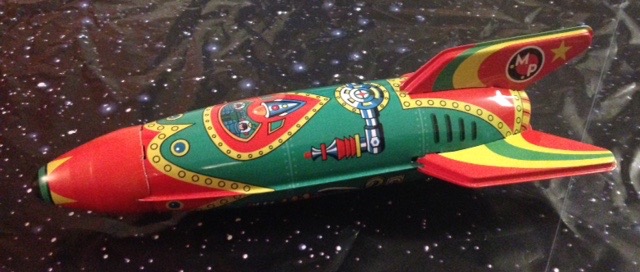
|
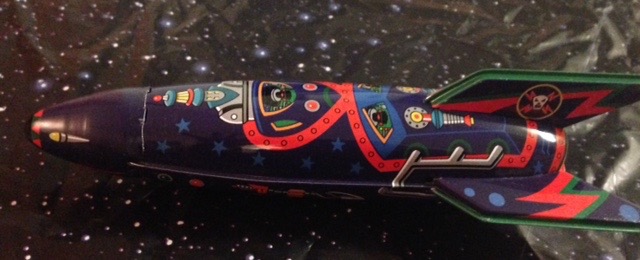
In
2006, Rocket USA created this wind-up Space
Race. Shown are wind-up saucers in the Mars
Patrol design, but they were also available as
space pirates. The wind-up saucers travel on a
figure eight loop over a ten inch by six inch
lithographed background depicting the saucers,
as well as the above friction space rockets and
the Mars Explorer saucer, which has the logos of
both Mars Patrol and the Inter-Calactic Space
Pirates. The track is labeled "Made in China".
|
|
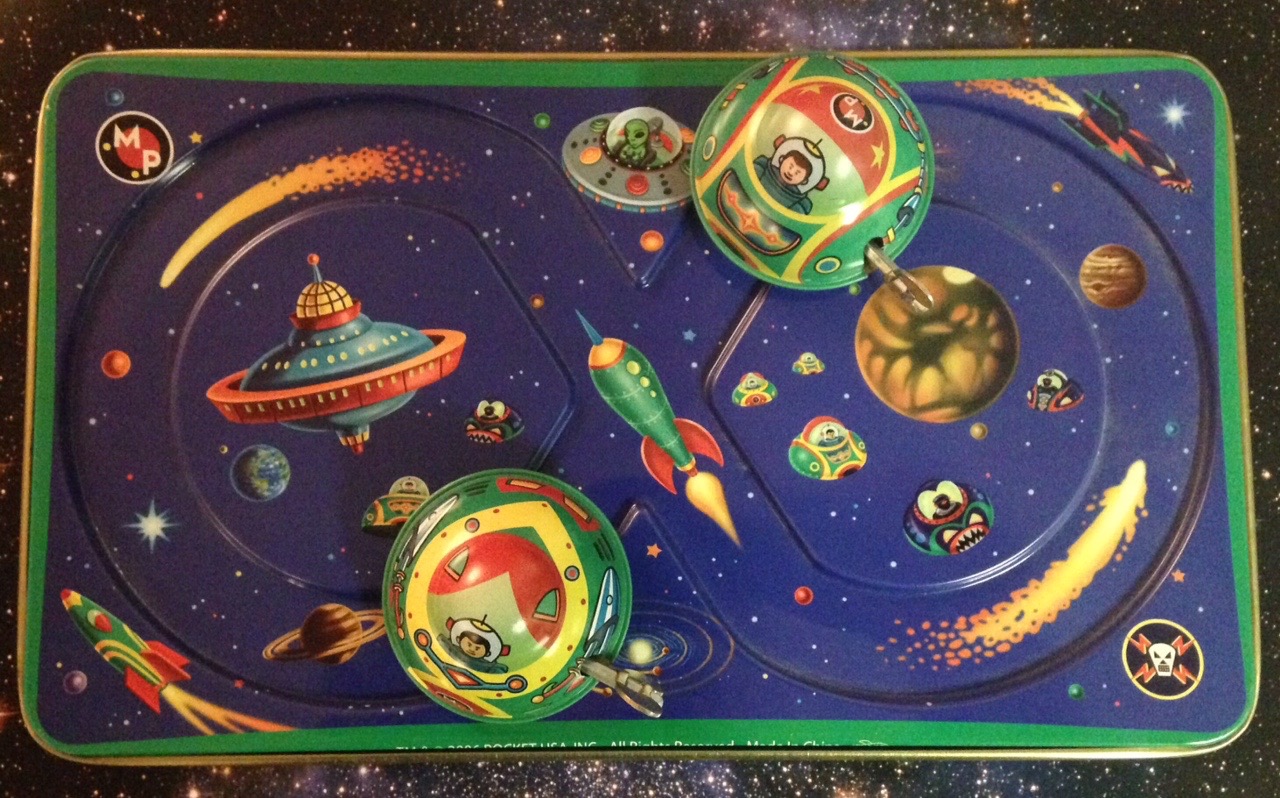 |
|






